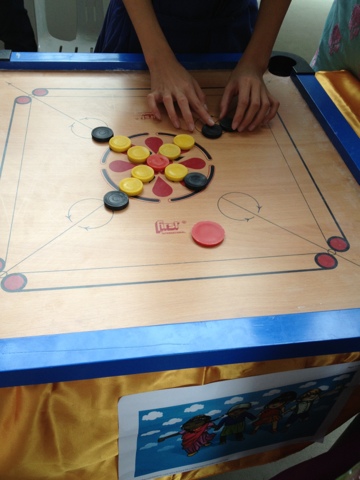July 21, 2013
In many ways today marks the end of this amazing,
once-in-a-lifetime opportunity. However, it also marks the beginning of endless
growth for our professional lives. As we begin our journey back home, we are
ready to share our reflections/observations with other educators. We are also
eager to try these lessons in our own classrooms! Throughout the past 2 weeks
we have had many conversations and we kept trying to figure out: What makes
Singaporean pedagogy internationally successful? AND, How can we replicate some
of these approaches in the US and in our classrooms?
Among all that we have learned (sorry we cannot include it
all) we would like to summarize our learning with the following list. Here we
highlight our key findings during our trip to 4 school and over 15 classrooms:
1.
Emphasis on conceptual understanding with the
model of concrete->pictorial->abstract
By taking the time to guide students
through this process with countless experiences for them to understanding the
concept.
There is more emphasis placed on deep
understanding rather than memorization
2.
High level of specialization and
differentiation
Most teachers in Singaporean school choose
1-2 areas to specialize in so that they can gain a greater understanding in
that subject. This has helped many teachers in digging deep into the teaching
and learning of mathematics.
School structures for most grade levels
include differentiated math classrooms. This helps teachers provide more
focused instruction based on student needs.
3.
Variety of learning structures with an
emphasis on group problem solving
Students are exposed daily to whole group,
small group, paired, and individual instruction. This variety helps students
learn in many different ways and not only from the teacher but also from
his/her peers. These emphases on rigorous group-problem-solving helps students
engage in academic conversations and help them learn to challenge others and
also change their own thinking. Always in a respectful and productive manner!
These are the kinds of skills are critical to success in the 21st
century!!
4.
Teachers have a sophisticated understanding
of mathematics concepts and misconceptions
Teachers are provided with countless
resources within their school and the Ministry of Education. MOE not only
offers their own program for future teachers but also continues to provide
professional development for all teachers.
Teachers are confident in their knowledge
and highly prepared!
5.
Promoting a balance between critical thinking
(problem solving) and mental math
Students have the opportunity to solve
rigorous problems to promote higher-level thinking and understanding. However,
teachers also place an emphasis on mental math that will help them be more
confident and efficient problem solvers. This balance is essential!
6.
Most importantly, a national and cultural
support and appreciation of teachers and education as a whole.
With the support of the Singaporean
governments’ financially and politically, the education system has flourished
in the last few decades. No wonder they are the leading country in most of the
international tests lately. Teachers are highly regarded and very well paid.
There is a strong cultural support for
education and parents take a very active role in their child’s education. This environment
is the perfect formula for a successful educational system.
Although our journey ends we would like to continue this
conversation with teachers all around the world. We welcome questions,
comments, and suggestions as we work to apply Singaporean pedagogy here in the
US.
Last and foremost, we would like to thank FUND FOR TEACHERS
for making with journey happen!!! These experiences will forever make a
difference in our lives and in our classrooms. THANK YOU!!
For teachers who are interested in applying, the application
process for Fund For Teachers begins in October and is due in January
(generally). If you want an adventure of a lifetime that will help you grow
professional please apply at: http://www.fundforteachers.org/
For those who want to support teachers in making these
amazing adventures happen you can donate at: http://www.fundforteachers.org/unicx.cfm






















